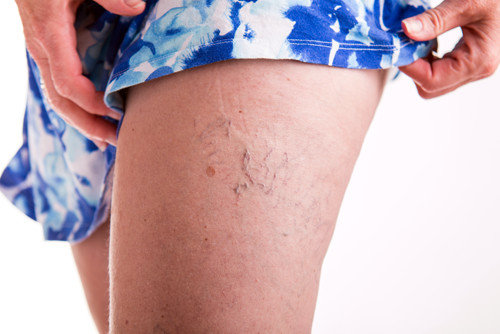 There are two main ways to address unwanted leg veins.
There are two main ways to address unwanted leg veins.
The most traditional way is through a technique called sclerotherapy. This involves injecting a small amount of a substance which is irritating into the inside of the unwanted vein. Substances used in our office include hypertonic saline and sotradecol.
Hypertonic saline uses osmotic irritation to cause water to leave the cells lining the inside of the vessel and results in damage to the lining of the vessel. When used in conjunction with compression, this results in sealing of the vessel walls to one another and minimizes the appearance of the vessel. There is no associated risk of allergic reaction with the saline so many people opt for this treatment due to its safety.
Sotradecol is a detergent formulation which causes irritation to the inner lining of the unwanted vessels. It has been used longer in Europe than in the United States but is associated with less pain than the traditional hypertonic saline.
A newer treatment involves the use of a 1064 nm long pulsed NdYAG laser. It works to heat the hemoglobin in the vessels, causing damage to the inner lining of the blood vessel. We utilize the Cutera CoolGlide Excel vascular laser to treat leg veins—this is an excellent laser which provides skin contact cooling while being treated to help diminish any discomfort.
Dr. Cassel will assess your leg veins, discuss possible therapies and determine which therapies are best for you. She may utilize a combination approach of sclerotherapy and vascular laser in order to best treat your vascular disease. Most patients require between 3-4 treatments whether they use the sclerotherapy or the vascular laser treatments.
It is important that after either treatment you use compression hose to help hold the vessels flat so that the walls of the vessel seal together. This helps with the efficacy of the treatment and may eliminate an extra treatment. Dr. Cassel recommends that you use the compression hose (15-20 mmHg pressure) when upright for the first 2 weeks post treatment.